#AMSTRAD ACTION
Text

UK 1987
#UK1987#AMSTRAD ACTION#BOOKS#ACTION#AMSTRAD#GAUNTLET#DRUID#SPINDIZZY#IMPOSSABALL#REVOLUTION#HEAVY ON THE MAGICK
8 notes
·
View notes
Photo
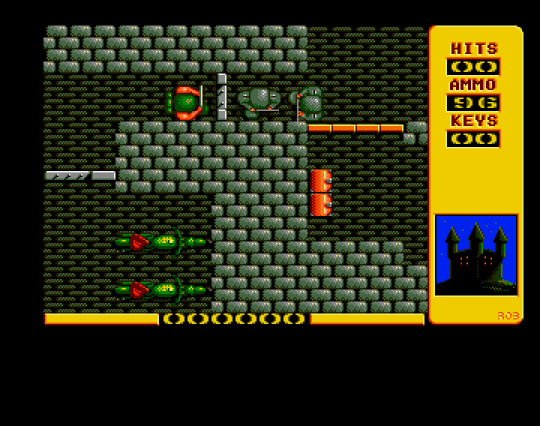
Into the Eagle’s Nest
World War II and video games have gone together like peanut butter and chocolate during the medium’s existence. Interpretations of the historic war range from serious strategy games & detailed simulators to the high-flying fare of Wolfenstein 3D or the Call of Duty series. Interceptor Micros, a publishing studio riding the wave of British microcomputers, had their take with Into The Eagle’s Nest, released in 1987, on a host of computing platforms of the time. Its setup and pedigree had potential to be something quite thrilling, but the finished product leaves much to be desired.
Read more...
#Hardcore Gaming 101#Evan Tysinger#Review#Into the Eagle's Nest#action game#top-down view#American 8-bit computer#8-bit computer#Amstrad CPC#Atari 8-bit#Atari ST#Commodore 64#Commodore Amiga#IBM PC#military game#Mindscape#World War II#ZX Spectrum#video games
7 notes
·
View notes
Text
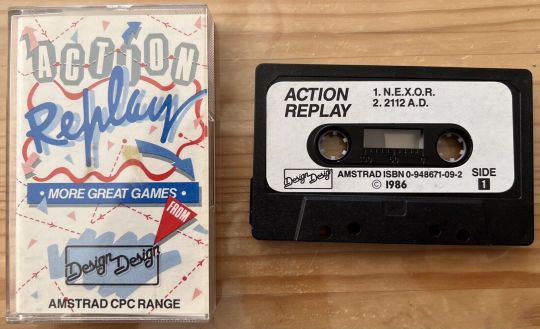
Amstrad CPC Action Replay
14 notes
·
View notes
Text

I love this undersea action cover art for Rescate Atlántida, aka Rescue from Atlantis, released in 1988/1989 for the Amstrad CPC, ZX Spectrum, and MSX. Artwork by Spanish artist Enrique Ventura.
249 notes
·
View notes
Text
Lockwood & Co. feature on the January 2023 Issue of the SFX Magazine




I'll put the text under the break if anyone can't access the photos :-)
"JOE CORNISH IS HAUNTED. NOT BY ANY BONE chilling apparition or plate-flinging poltergeist but by a time. A vanished age, of strange torments and diabolical dread.
“This is a world of draughty houses and windows that don’t quite close properly and creaky floorboards and clicking pipes,” he tells SFX, smiling over a Zoom connection. “The world I remember from my childhood, before double-glazing and insulation!”
Welcome to the phantom-infested Britain of Lockwood & Co. It’s a little like the 1970s, only even weirder. Adapted from the popular series of books by Jonathan Stroud, this new Netflix offering pits swashbuckling teens against the unquiet dead in a London spilling over with paranormal activity. Even the local A-Z, you strongly suspect, drips with ectoplasm.
ANATOMY OF A GHOST
“I love supernatural stories,” says Cornish, who serves as lead writer and director on the eight-part series, “and it’s unusual to find a story where the science of ghosts has been so thoughtfully defined. There’s a broad set of rules for ghosts that most stories adhere to, but there’s not really an almost Darwinesque analysis of different types of ghosts, different species, different behaviours, a taxonomy.
“The idea that they can kill you by touching you completely changes the dynamic of a ghost story, brings it into the action-adventure realm. So you get everything great about a ghost story but these other genre elements really take it into a new place.
“On top of that you’ve got terrific worldbuilding. This takes place 50 years into a ghost epidemic, and the world has really changed because of it. Different economics and different social structures have emerged. Because young people are more sensitive to the supernatural, which is a classic trope in ghost stories, it’s extrapolated into this world where young people are employed by massive adult-run agencies to detect and fight ghosts.
“So it’s a pretty amazing bit of thinking, based on a very
attractive set of genre ideas that have been around for ages but have never really been reinvented in such a clever way.”
It’s a more analogue world, where technological progress stuttered. And that’s a premise that appeals to Cornish, who made his name with the hand-tooled, micro-budget joys of The Adam And Joe Show – a pioneering ’90s celebration of geek culture, knocked together from toys, love and cardboard – before promotion to the big screen as director of Attack The Block in 2011.
“The world changed tack when the problem started, because everything that would be regarded as pseudo-science became real
science,” he explains. “So the world stopped at the time of Amstrad word processors! “It became a more industrial world, because iron and salt and water can repel ghosts, so suddenly these almost Victorian industries are revived. Also, in a weird parallel way, old things are suddenly scary. Anything with an ancient history is potentially lethal, because it might be the source of a ghost.
“For me it felt like the early ’80s, when I was a teenager, because that was kind of pre-digital. It was a world that still had analogue media and you could buy records and fanzines. There was a world of printed youth culture that existed in a social way, that wasn’t on
telephones and computers. You communicated in a much more person-to-person way back then. So that was pleasing for me as well – the series has this kind of retro-contemporary feel
to it that’s half modern and half 50 years ago.” The spectral aesthetic in Lockwood & Co also takes inspiration from the past. “We started by looking at Victorian spirit photography. Because photography is pre-digital, it’s chemical, the ghosts feel very different, like a real physical presence. They feel as if they exist in the world of natural physics – we can’t really get away with hiding them.
“In other movies or TV shows you might glimpse a ghost as a jump scare and then it’s gone. Our ghosts are really present, and our characters fight with them, so we had to come up with a design that you could really train the camera on, and involve in an action sequence, and would be able to leap around and dive and swoop and bolt into a corner.
“They’re all made out of smoke, they’re all made out of something ethereal. There are lots of different types in the series, lots of colours
and densities and shapes. We tried to get away from super-digital ghosts and make them feel like they could really exist in a science
experiment.”
Lockwood & Co looses its phantoms in some genuinely creepy abodes. What’s the secret of bringing a legitimately goosefleshing haunted house to the screen?
“We worked really hard on lighting, and light levels, making sure stuff was legible enough but that you’re also slightly peering into the shadows. I think sound is hugely important, and also silence. A lot of modern media is frightened of silence and when nothing happens that’s often the most interesting moment. We tried not to do too
many jump scares. We do one or two, but we try and create an atmosphere of creeping fear rather than give people heart attacks.”
Stroud’s five-novel Lockwood series launched with The Screaming Staircase in 2013 (the TV version adapts this tale but also goes
beyond it, Cornish reveals). Its young ghostbusters are Lucy Carlyle, gifted with psychic powers, and Anthony Lockwood, the
dashing and enigmatic founder of the only agency to operate without adult supervision. The show captures the dashing spirit of the
books, quippy heroes slicing at wraiths with rapiers, but plays things commendably straight.
“It’s a very sincere endeavour,” acknowledges Cornish. “We believe in the characters and we believe in the world. Stuff like this only works if you really commit to it and decide that it’s real. I don’t love shows
where the characters are winking at the camera, or there are meta jokes. I want the world to be completely absorbing and credible.
“One of the most important and compelling things for people who love these books is the relationship between Lockwood and Lucy. It’s
a relationship that has an enormous fandom – there’s an amazing amount of fan art out there. It’s a sort of unrequited will-they-won’t they relationship. This is a world where young people shoulder an incredibly grave burden, at a time in their life when they shouldn’t be
thinking about death, or mortality, all the things that older people have to think about, and yet here they are, armed with weapons,
having to fight things that could kill them.
“But then another brilliant thing about the novels is that if you get too depressed you get more vulnerable, so the ghosts can get you if
you feel too bleak. So they have to cheer each other up and make quips and jokes, for safety purposes. We just approached the whole thing as if it was completely real.”
Given the rabid fandom, getting the casting of the leads right was crucial. Bridgerton’s Ruby Stokes ultimately won the role of Lucy.
“She’s the centre of the story,” Cornish tells SFX. “She’s vulnerable, damaged, kind of abused and exploited as a child, comes from
a broken home, has lost her father, yet has incredible gumption and
ambition and a very strong sense of self-preservation.
“She has this gift that she really doesn’t want, and she packs her bags, runs away from home and sets out to London with no qualifications, nowhere to stay the night. Her powers are an expression of her emotional sensitivity. In the book it’s like
teenage emotions are being made into a supernatural power.
“So we just had to find an incredible young actor who felt like she could do it, and who you believed had that inner emotional life. Before I did this I always wondered how castings worked, whether there was some super complicated methodology. But a person just
walks into the room and you go, ‘Do I believe that she’s Lucy?’ Ruby was actually one of the first people we saw, and we all just went, ‘Oh,
there she is! There’s Lucy Carlyle!’”
Newcomer Cameron Chapman bagged the title role. “Lockwood was much harder, actually,” shares Cornish. “We saw hundreds and hundreds of actors, and Cameron came in pretty late in the day, at the eleventh hour. And that’s equally hard, because he’s got to be sort of handsome and cool and yet really vulnerable and haunted. He’s got to have swagger and braggadocio but also be a
bit of a bullshit artist. He’s like a sort of teen entrepreneur. In the ’80s
everybody wanted to be a teen entrepreneur, and he’s that made flesh. But he’s also wounded and secretive and has sort of a death wish.
“Cameron had all that. Weirdly, he looks very like the illustrations on the book covers, and he wears that long coat really well. He does the charisma, he does the vulnerability, he’s a bit of a dick – not in real life, in terms of acting! – and then he can be very romantic and
swoony. It’s a heck of a part for a young actor.
Out of the three main actors [Ali Hadji-Heshmati plays George, Lockwood’s second-in-command] he’s the guy who really hadn’t
been on camera before, but he does an exceptional job.”
But while fan approval is vital, even more key is winning the heart and mind of the man who dreamed up Lucy, Lockwood and their
spook-riddled world in the first place.
“Jonathan has been very involved from the start,” says Cornish. “I formed a relationship with him in order to get him to give us the
rights to the book, and then we’ve let him read every draft of the scripts. He’s come to visit the set, he’s sat down with the actors. He’s really into it and he’s been extraordinarily supportive, but sensibly he said to us, ‘Look, you go and do your thing. I understand this is
a different beast, between the page and the screen.’
“But I hope, and I trust, that he has been surprised by how much we’ve just stuck to what he’s done. Because it’s really, really good.
He’s provided pretty incredible material.”
Lockwood & Co is on Netflix from 27 January.
#lockwood and co#l&co. netflix#ruby stokes#cameron chapman#ali hadji-heshmati#lucy carlyle#anthony lockwood#george karim
396 notes
·
View notes
Text



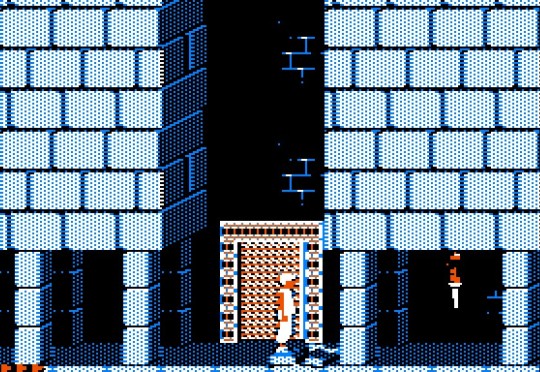
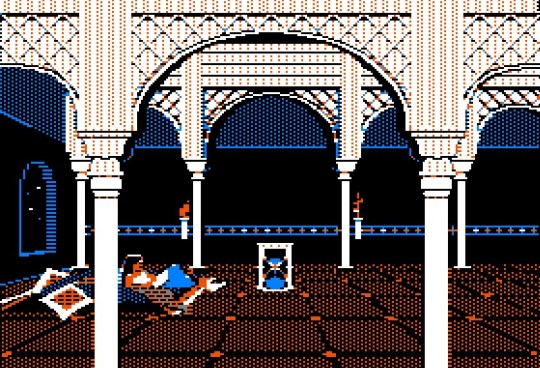


351.) Prince of Persia
Release: October 3rd, 1989 | GGF: Action, Platformer, Puzzle | Developer(s): Brøderbund Software, Inc., Arsys Software, Inc. | Publisher(s): Brøderbund Software, Inc., Softgold Computerspiele GmbH, Revelation Software, Domark Software Ltd., Riverhill Soft Inc., Ocean Software Ltd., Virgin Games, Inc., NCS Corporation, Victor Musical Industries, Inc., Turbo Technologies, Inc., Konami Industry Co., Ltd., Tengen Inc., Mindscape International Ltd., Tec Toy Indústria de Brinquedos S.A., Red Orb Entertainment, Ubisoft Entertainment SA | Platform(s): Apple II (1989), Amiga (1990), Amstrad CPC (1990), Atari ST (1990), DOS (1990), PC-98 (1990), SAM Coupe (1990), Sharp X86000 (1991), TurboGrafx CD (1991), FM Towns (1992), Game Boy (1992), Game Gear (1992), Macintosh (1992), NES (1992), SEGA CD (1992), SEGA Master System (1992), SNES (1992), Genesis (1993), Game Boy Color (1999), Mobile (2007), Xbox 360 (2007), PlayStation 3 (2008), BlackBerry (2009), iPad (2010), iPhone (2010), Android (2012), Nintendo 3DS (2012), Wii (2012)
6 notes
·
View notes
Text
Live and Let Die: The Computer Game
Original Release: 1988
Developer: Keypunch, Elite
Publisher: Domark
Platform: Commodore Amiga, Atari ST, Commodore 64, Amstrad CPC, ZX Spectrum
Version played: Commodore Amiga
Also Known As: Aquablast

This game was in development before there were any plans to make a Live and Let Die game. Publishers Domark saw Aquablast under development. Aquablast was a speedboat action game and, because there’s a speedboat sequence in Live and Let Die, decided to help publish it as a Bond game – although only in the UK, it was still released as Aquablast in the USA.
Live and Let Die has you operating a speedboat equipped with a gun and missiles. The gun is simple enough to use, but the missiles can only be fired if you go fast enough first then fire when slowing down. These need to be saved for certain targets, but you can collect more (as well as fuel) from crates dropped by helicopters.
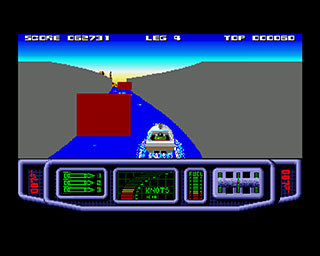
As you play, you’ll weave through enemies and dodge obstacles, and there’s a decent amount of both, including narrow areas with walls, planes dropping torpedoes and slides you have to use to dodge rocks. The game consists of four missions.
The first is a training mission with infinite fuel and missiles. Here you have to destroy red targets with your gun and black targets with your missiles. Then there are North Pole and Sahara levels, where you can practice using limited missiles and fuel. The levels have a different look but all feel exactly the game.
The final mission is New Orleans, once you hit a certain number of points, you need to destroy Mr. Big’s base by firing a missile from mid-air (you do this by hitting a log).

The gameplay is fun but, due to the game never changing, wears off very quickly. This is fine for a quick blast but it’s also obvious that this was never designed to be a Bond game. If Domark had waited another year, they could have used a much better speedboat combat game called Cobra Triangle.
Other Versions
Atari ST
The Atari ST version is identical to the Amiga version.
Commodore 64
This version is the nicest looking 8-bit version, the 8-bit versions do run a bit slower compared to the main versions.

Amstrad CPC
This one has more cluttered backgrounds that doesn’t look quite as nice as the Commodore 64 version.

ZX Spectrum
The ZX Spectrum struggles to run this game, even with the graphics toned down a lot.

3 notes
·
View notes
Photo

Elevator Action 🏢 Taito Corporation, Taito 📅 1983 🖥 3DS, Amstrad CPC, Arcade, Commodore 64, FM-7, Game Boy, MSX, NES, PC-8800 Series, PS4... #videogames
#3DS#Amstrad CPC#Arcade#Commodore 64#FM-7#Game Boy#MSX#NES#PC-8800 Series#PS4#SG-1000#Sharp X1#Switch#Wii#Wii U#ZX Spectrum
4 notes
·
View notes
Text
READ AMSTRAD OF THE WIRED
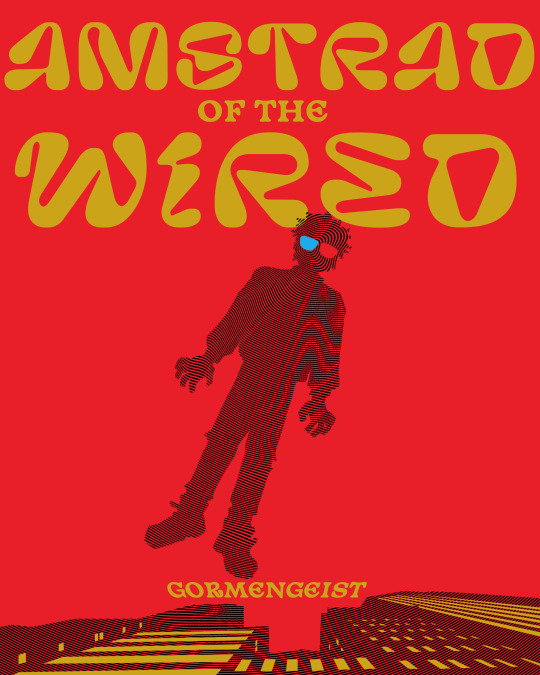
Psychics. Daemons. Action. Comedy. Etc. Updated at the end of every month.
6 notes
·
View notes
Text
Not to be confused with Spotify.
Shopify Inc., stylized as shopify is a Canadian multinational e-commerce company headquartered in Ottawa, Ontario.
Criticism
In 2017, the #DeleteShopify hashtag campaign called for a boycott of Shopify for allowing Breitbart News to host a shop on its platform. Shopify's CEO, Tobias Lütke, responded to the criticism,[109] saying "refusing to do business with the site would constitute a violation of free speech".
In October 2017, Citron Research founder, short-seller Andrew Left released a report which claimed Shopify was overstating the number of merchants using the e-commerce platform and described it as a "get-rich-quick" scheme in contravention of Federal Trade Commission regulations. The day the report was released, the stock plunged more than 11%. Left wrote another report about Shopify in April 2019, stating he believed Shopify's stock price would come down 50% in the next 12 months. In January 2020, Left announced in his annual letter to investors that Citron Research had exited the short position. The reports did not lead to an investigation into Shopify by the FTC.
In July 2022, Shopify was criticized by left-leaning media watchdog Media Matters for hosting the online store of far-right, anti-LGBT influencer Libs of TikTok. In response to Media Matters, a Shopify spokesperson stated that Libs of TikTok was not in violation of the company's Acceptable Use Policy, which "clearly outlines the activities that are not permitted on [the] platform." In November 2022, this criticism was renewed when an article published by the Canadian Broadcasting Corporation (CBC) article highlighted Ottawa City Council member Ariel Troster's criticism of the company in light of a recent shooting at an LGBTQ nightclub. Sharing the CBC article, Nandini Jammi of Check My Ads criticized Shopify on Twitter. In response to Jammi, CEO Tobias Lütke tweeted, "Shopify has a published acceptable use policy and a principled process to apply it. Pressure groups on all sides try to influence it sometimes and CBC needs to see through that not amplify bad faith narrative."
Lawsuits
In December 2021, a group of publishers including Pearson Education, Inc., Macmillan Learning, Cengage Learning, Inc., Elsevier Inc., and McGraw Hill sued Shopify claiming that it had failed to remove listings and stores selling pirated copies of their books and learning materials. The lawsuit was settled "amicably" out of court; the details were not disclosed.
A class-action lawsuit for $130 million was filed in May 2023 by employees who had been laid off.
In June 2023 Shopify announced a fight against "patent trolls" who "stealthily orchestrate hundreds of patent litigation cases yearly", and filed a lawsuit.
Data breach
In September 2020, Shopify confirmed a data breach in which customer data from fewer than 200 merchants was stolen. One of those merchants later said over 4,900 of their customers alone had had their information accessed. Shopify claims that the data stolen included names, addresses and order details, but not "complete payment card numbers or other sensitive personal or financial information." Shopify said that there was no evidence that the data had been misused, and identified two "rogue members" of its support team as having been responsible. They were fired, and the matter was forwarded to the FBI.

Tobias "Tobi" Lütke MSC is a German/Canadian entrepreneur who is the co-founder and CEO of Shopify, an e-commerce company based in Ottawa, Ontario, Canada. Lütke was born in Koblenz, Germany in 1981. He received a Schneider CPC (German brand of the Amstrad Colour Personal Computer distributed by the Schneider Rundfunkwerke AG) from his parents at the age of six. By 11 or 12, he began rewriting the code of the games he played and modifying computer hardware as a hobby. Lütke dropped out of school and entered an apprenticeship program at the Koblenzer Carl-Benz-School to become a computer programmer after tenth grade. He moved from Germany to Canada in 2002.
Reasons for posting the shady history of the Canadian based German run company Shopify and its Child Protege, owner Tobias Lutke will be cleared up soon.
#SHOPIFY#CANADIAN BASED#GERMAN OWNED AND OPERATED#Controversies#Lawsuits#Data Breach#Anti-LGBTQ#Breitbart#Libs if TikTok#CBC#Tobias Lutke#Ottowa#Canada
0 notes
Text





Street Fighter II
I came back from Lucca Collezionando! It was an odd convention, focused on vintage comics and toys so fanarts of 80s and 90s anime sold very well at our booth. Happy to have made some extra, I took a look at the retro toy area to see if there was something worth snagging! I came back with just one game but hey, what a game.
(I also came back with a 90s Pokemon toy of which I'll take pics very soon, I just need to find its batteries first.)
Street Fighter II was sold to me at a bargain, so much so that I feared it was a bootleg repro board! Luckily that's not the case and the boy here is totally original.
We all know fighter genres are not the Game Boy's strongest suit, but along with King Of Fighters, Street Fighter ends up among the best. It's certainly better looking than any Game Boy Mortal Kombat: just by choosing cartoony sprites over pre-rendered ones the characters become recognizable instead of being a mess of pixels. Now if only they went for a slightly chibi style like KOF they would have been even better suited for the small screen, but we take what we have.
The soundtrack is certainly where this game shines the most. It's long, elaborate and has many great tunes! All songs together add up to one hour of music!
SF for GB lets you play with nine characters total on eight different stages, has both Classic and Arcade mode along with a Versus one playable via Cable Link, and fighters can finally display all their moves. Once again, better than poor Mortal Kombat that had to take away its fatalities! It's even pretty responsive with controls (has to be, otherwise it wouldn't be called one of the best fighters for Game Boy) but the big downside is that it renders everything like molasses so matches feel like slow and strategic instead of quick and full of action.
In truth, I've seen far worse: the Game Boy version is nothing compared to the many ports Commodores and Amstrads suffered during those years; unfortunately, I've also seen better: considering once again that the Game Boy shines best with way different gaming genres, one would be ovbiously better off playing Street Fighter on SNES and arcade, where it was originally intended to run.
0 notes
Text

UK 1987
6 notes
·
View notes
Photo

Tiger Road
Released in 1987, Capcom’s Tiger Road puts you in the garb of warrior monk Lee Wong on a mission to rescue kidnapped children from the evil emperor Ryuken. Each of the game’s five levels takes place in a fortress helmed by a named boss, with design and architecture modeled after Chinese fantasy.
Read more...
#Hardcore Gaming 101#Kurt Kalata#Review#Tiger Road#action: side-scrolling#Amstrad CPC#arcade#Capcom#Commodore 64#Commodore Amiga#fantasy: Far East#IBM PC#TurboGrafx-16#ZX Spectrum#video games
3 notes
·
View notes
Text
Sega's catalog of racing games is impressive, but for those looking for truly exceptional titles, the following entries stand out among the rest.
Racing games are one of the oldest video game genres around, thrilling gamers since Magnavox Odyssey owners gave Wipeout (not that one) a go. Nearly every developer around the world has given racing games a try, with some getting more success than others. Mario Kart has sold a lot of units for Nintendo, and Gran Turismo became the biggest-selling game on Sony’s PS1.
However, it’s hard to think of a company that likes racing games more than Sega. They ruled the arcades directly with a wide range of titles that would go on to become classics in the genre. But which ones are Sega’s best racing games?
NOTE
These entries are not solely ranked by their Metascore, as this isn't always the best metric. Instead, the games listed here are ranked by their gameplay, features, thrills, and their impact on the genre, with Metascore just one aspect of their rating.
10
Sega GT 2002

Metascore: 82
Developer: Wow Entertainment.
Platform: Xbox.
Released: September 2002.
The original Sega GT was meant to be the Dreamcast’s answer to Gran Turismo, and it was a good game. But it wasn’t quite the big hit Sega was looking for, selling modestly on an already modest console. Luckily, the series continued after the Dreamcast’s demise with Sega GT 2002. It was bigger, flashier, and gave players 160+ cars to work with.
The game came with an interesting range of modes, from a Gran Turismo-like Career Mode to a Chronicle Mode where players could race and tweak vintage cars from the 1960s onward. They could even earn extra cash by completing extra objectives during the race. The biggest cash prize came from getting through a race unscathed, so it favored smooth racing over stock car-like body contact.
9
Super Hang-On

Metascore: 76
Developer: Sega AM-2.
Platforms: Arcade, Genesis, Game Boy Advance, Amiga, Atari ST, ZX Spectrum, Amstrad CPC, Commodore 64, Sharp X68000, Nintendo 3DS, PS4.
Released: April 1987.
Picking out the best of Sega’s 1980s racing output is tricky. Power Drift brought the action up close with its zoomed-in, swaying camera. Enduro Racer had wheelies and logs to jump over. Then there was the almighty OutRun, a tricky game where players had to master the driving mechanics to reach one of its five goals within its tight time limits.
Still, as popular as they were, the biker racer Super Hang-On deserves kudos. It brought on more tracks and a turbo function to out-race the competition. Players could even choose their own music track like in OutRun. But it could get just as challenging depending on which course the player chose too. The Africa course is simple enough at 6 stages, but Europe offers a whopping 18 stages to race through.
8
Virtua Racing
Metascore: 82
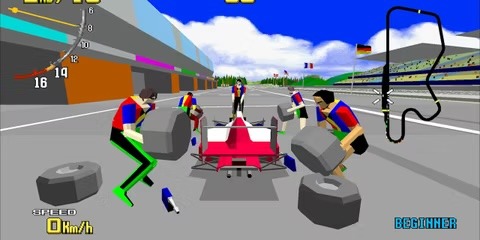
Developer: Sega AM-2 (original), M2 (Switch).
Platforms: Arcade, Genesis, 32X, Saturn, PS2, Switch.
Released: April 1992.
Sega was arguably the first company to make a pseudo-3D racing game with 1976’s Road Race. But when it came to actual polygonal 3D, they were beaten out by Namco’s underrated Winning Run and Atari’s stunt-filled Hard Drivin’. Yet they’re not as fondly remembered as Sega’s Virtua Racing.
It ran much faster than Hard Drivin’, looked more vibrant than Winning Run, and offered the player more bang for their buck. Players could pick multiple views over its forebears' first-person-only angle and featured 3D human NPCs during its pit sequences. VR may not have been the first 3D racer, but it was the best for its time and was certainly the most influential for the genre.
7
Scud Race
GameFAQs Score: 3.93/5 Stars

Developer: Sega AM-2.
Platforms: Arcade.
Released: 1996.
After the success of Sega’s Daytona USA, people at the company expected developers AM-2 to make Daytona USA 2 next. They would eventually make a sequel in 1998, but they wanted to mix things up for 1996. So, they made the similar but different Scud Race (aka Sega Super GT). It replaced Daytona’s stock cars with GT supercars and used the snazzy new Model 3 Step 1.5 hardware over Daytona's Model 2 tech.
While many of its elements still resembled Daytona, like the HUD and select screen, the gameplay was new. It introduced the ability to accelerate while drifting, giving players the edge over other racers if they could master it (and fishtails if they couldn't). It made for thrilling races, but it would ultimately be limited to the arcades as its Dreamcast port would get canceled.
6
Sega Rally Championship
Metacritic User Score: 8.2

Platform(s): Arcade , Sega Saturn , PC , Game Boy Advance , PS2
Released: October 11, 1994
Developer(s): Sega-AM3
Genre(s): Racing
Only a relatively small group of lucky arcade players really knew about Scud Race back in the day, but everyone practically heard about Sega Rally Championship. It may have only had 3 cars and 4 tracks, yet it gave players a new experience by replicating rally-style racing. For example, winning a race relied more on overtaking cars and staying within the time limit than constantly aiming for first place.
It certainly helps, but even if the player didn’t come in first on a track, their consistency could earn them enough points to win. The game was also more in-depth on how different surfaces affected the car’s handling. They could keep their grip on asphalt, then slip more on grass, then even more in mud. As simple as it sounds, it was enough to inspire other developers to make their own rally games and inspire players to get the game on the Saturn and PC.
5
F-Zero GX
Metascore: 89

Platform(s): GameCube
Released: August 25, 2003
Developer(s): Amusement Vision
Genre(s): Racing
Sega making an entry in a Nintendo game is mind-blowing to look back on. It's just as surprising to learn it was specifically made by Amusement Vision, who’d later make the Yakuza/Like A Dragon series and become better known as RGG Studio. Y/LAD creator Toshihiro Nagoshi also produced many of Sega’s classic racers, like Daytona USA and Scud Race, alongside design work for Virtua Racing.
In short, odd as it seems, Nintendo knew they'd do great work with F-Zero GX. It lived up to the wild speed previous F-Zero games reached but with improved visuals, more tracks, and an infamous story mode that really ramped up the challenge. Canny players could even use Gameshark/Action Replay to access hidden tracks from its arcade equivalent, F-Zero AX, and get even more hours of ultra-speed racing.
4
Daytona USA 2: Battle on the Edge
GameFAQs Score: 4.27/5 Stars

Developer: Sega AM-2.
Platforms: Arcade (original), PS4, PS5, Xbox Series X/S, PC ( Like A Dragon: Gaiden ).
Released: June 1998.
As groundbreaking as Virtua Racing was, Daytona USA was a vast improvement in graphics and gameplay. It had more cars, more impressive tracks, and adaptive AI that tailored itself towards the player’s skill level. So, it’s no wonder Sega would port and remake it multiple times, with the Saturn alone having 2 versions of the game. However, its sequel, Daytona USA 2: Battle on the Edge, would never leave the arcades.
The only way to play it at home is to get Like a Dragon Gaiden and find it under the new, non-license-infringing title, Sega Racing Classic 2,at the arcades. It has new drifting techniques like the ‘slingshot’, and extra modes like Grand Prix and Endurance. With much more on offer, it’s surprising that Sega never gave it a chance outside the arcades.
3
Sonic & All-Stars Racing Transformed
Metascore: 82

Platform(s): PS3 , PS Vita , Xbox 360 , Wii U , 3DS , PC , Android , iOS
Released: November 20, 2012
Developer(s): Sumo Digital
Genre(s): Racing
Technically, Sonic & All-Stars Racing Transformed wasn’t made directly by Sega. Both it and its predecessor, Sonic & Sega All-Stars Racing, were made by Sumo Digital, who previously made OutRun 2006: Coast 2 Coast for the company, and recently made The Texas Chainsaw Massacre game. Sega just published the game for its various platforms.
Still, it’s chock-full of references to classic Sega games, right down to its soundtrack, which is full of remixes of old-school tunes. The Transform mechanic also spiced things up beyond its ‘Sega Kart’ roots. At certain points on the track, the player's car will transform into a boat or aircraft to travel on water or in the air, complete with new physics and mechanics to work with. It’s an inventive game that could do with a modern re-release.
2
F355 Challenge
Metascore: 85

Developer: Sega AM-2.
Platforms: Arcade, Dreamcast, PS2.
Released: July 1999.
Sega has had a thing for Ferraris since OutRun used a Ferrari Testarossa Spider. It certainly was the start of their willingness to use actual motor licenses, from the different cars in games to the Daytona 500 NASCAR race itself. It culminated in F355 Challenge, a game that showcased producer/director Yu Suzuki’s love for the brand so much he (allegedly) raced his own Ferrari on tracks for data collection.
It also shows how closely he and AM2 replicated the F355. For 1999, it was the most realistic depiction of the car and what it’s like to race it on circuits. Combined with its use of real racing tracks, and the same real-time ‘Magic Weather’ system as Shenmue, it gave players an authentic racing experience come rain or shine, both in the arcades and at home.
1
OutRun 2
Metascore: 79

Developer: Sega AM-2 (Arcade), Sumo Digital (Xbox).
Platforms: Arcade, Xbox.
Released: December 2003.
The original OutRun inspired a host of follow-ups. Some of which are just as fondly remembered, like OutRunners. Yet there was only one game that got the distinction of being OutRun’s official sequel, and it came out 17 years later, in 2003. OutRun 2 is arguably the best entry in the series too, with some preferring its souped-up re-release OutRun 2006: Coast 2 Coast.
O2006 had more cars and more modes, including its exclusive ‘Coast 2 Coast’ Mode. But O2 had Heart Attack mode, where performing select stunts during courses earns the player heart points. O2’s journey home via the Xbox also had better controls than O2006's home releases. It also came with tracks from Scud Race and Daytona USA 2. Players who missed out on those underrated gems could finally give them a swing via O2.
#sega#sonic and all stars racing transformed#sega gt 2002#super hang on#virtua racing#scud race#sega rally championship#f zero gx#daytona usa 2 battle on the edge#f355 challenge#outrun 2
0 notes
Text
Unpreserved Amstrad CPC games
In March, and thanks to David Crookes, we added four previously unpreserved #AmstradCPC games into #GTW, including two strategy and two action games by Angela Swinbourne:
0 notes
Text
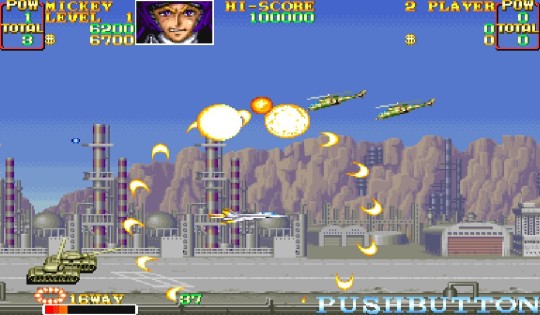





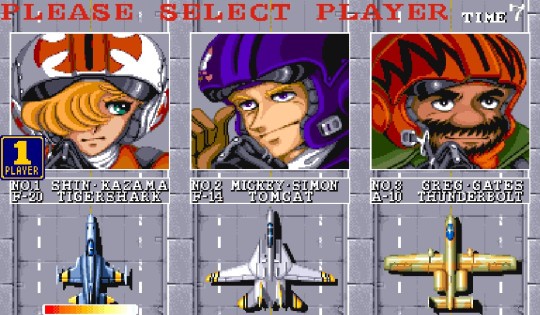
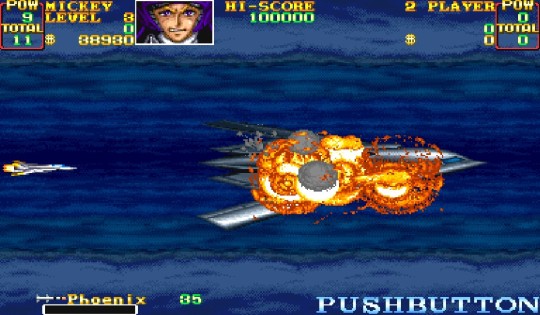
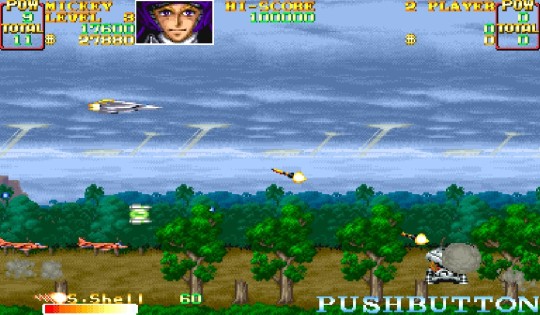

378.) U.N. Squadron
Release: August, 1989 | GGF: Action, Arcade, Shoot 'Em Up | Developer(s): Capcom Co., Ltd. | Publisher(s): Capcom Co., Ltd., U.S. Gold Ltd. | Platform(s): Arcade (1989), Amiga (1990), Amstrad CPC (1990), Atari ST (1990), Commodore 64 (1990), ZX Spectrum (1990), SNES (1991)
4 notes
·
View notes